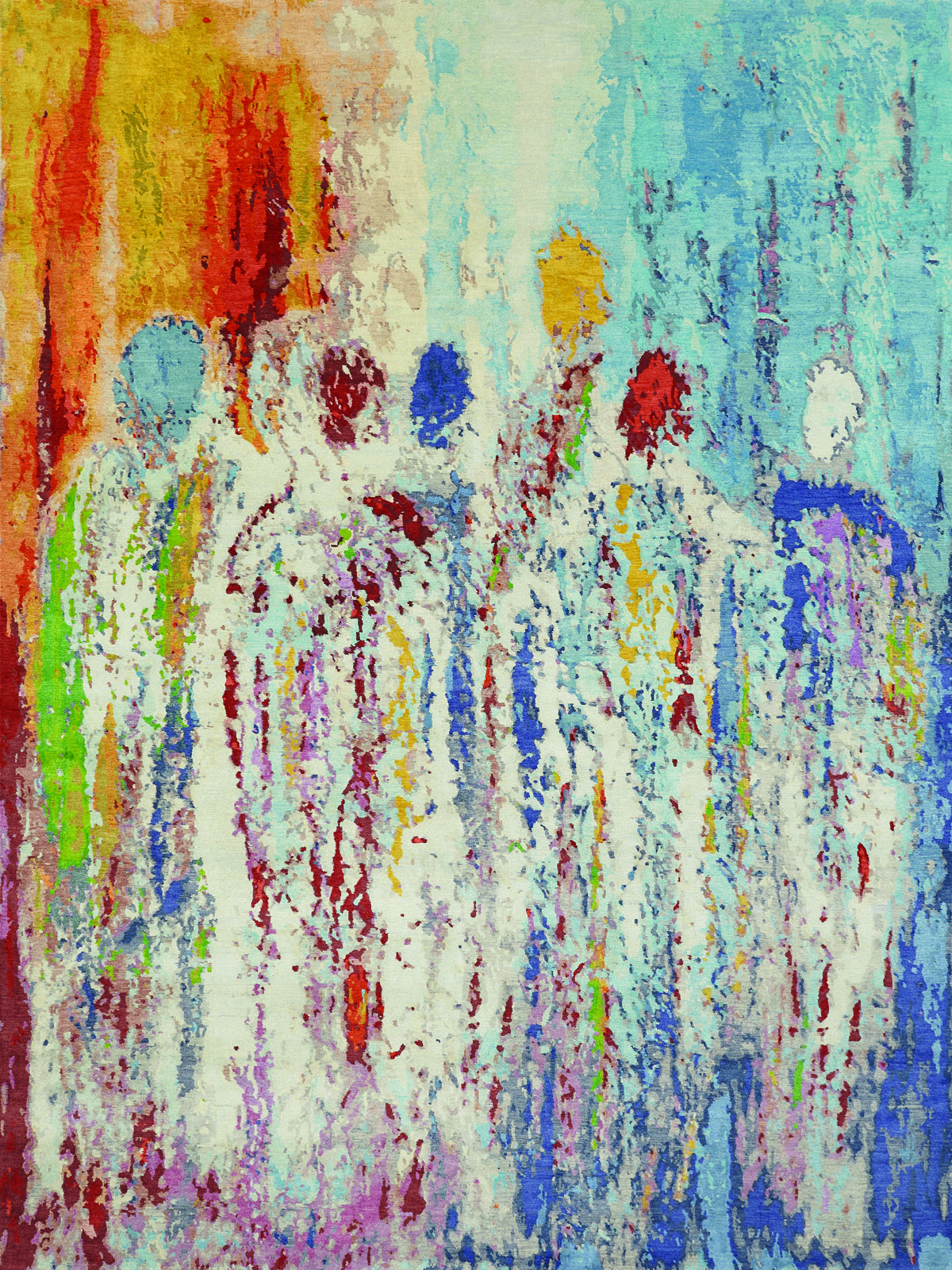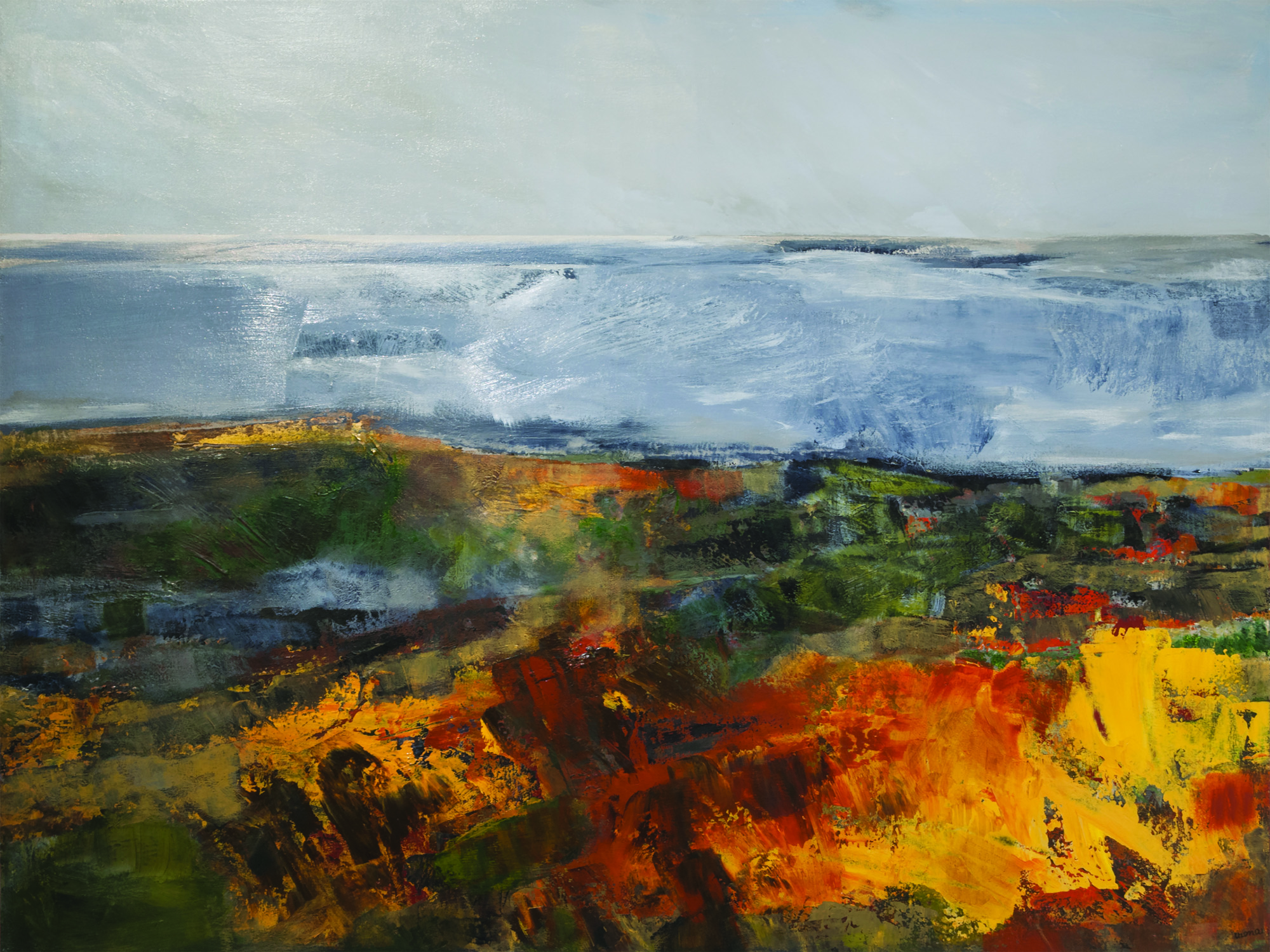Creating carpets may be in Erbil Tezcan’s DNA. After all, the multi-award-winning designer hails from Turkey, a country with an almost mythical reputation for the art of rug-making, stretching back millennia. “I grew up in Ankara, where every home has Turkish rugs, but to tell the truth I didn’t notice them much,” admits the affable designer, who now lives in New Jersey.
Unbound from tradition, Tezcan’s ability to completely re-envision the way rugs are designed and made has won him international acclaim.
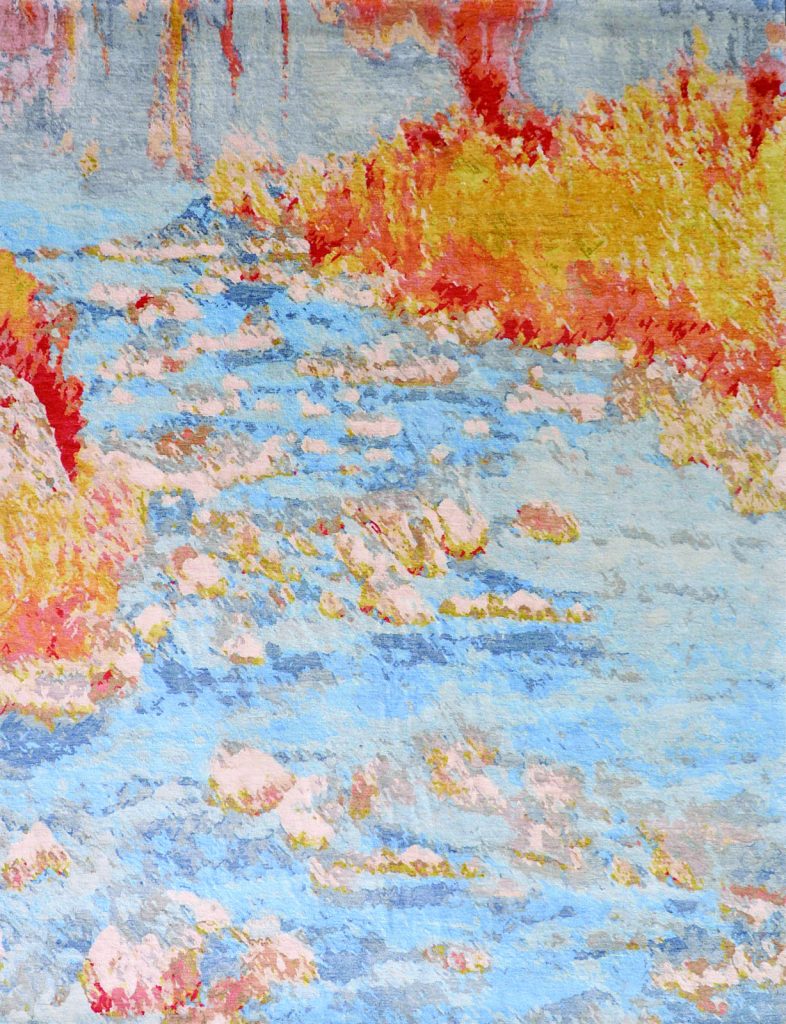
Take Summit, a rug inspired by a photograph by US photographer Art Wolfe, titled “Stacked Boats, Lake Baikal, Russia.” In Tezcan’s hands, upside-down boats frozen in ice morphed into an abstract take on a mountainous landscape, rendered in silk and wool. The rug went on to win the coveted Best Modern Design, Deluxe Rug award at the 2017 Domotex international rug design competition in Hanover, Germany.
“I design because I love it, not to win awards,” he says. “Anyway, I consider myself a translator rather than a designer. It’s this gift I have, to see something and immediately translate it in my head into a beautiful-looking rug.”
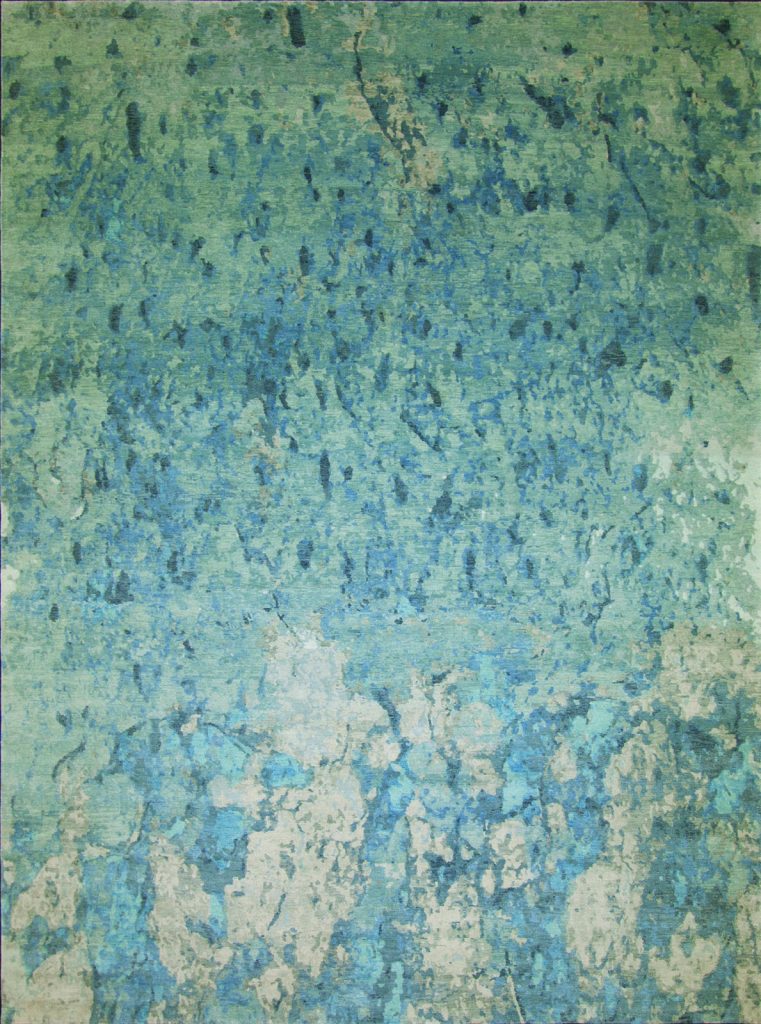
The message seems to be coming across. He and his company, Wool & Silk Rugs, have carted home a top award from the Domotex show every year for the past six consecutively. The rugs are as likely to be displayed in galleries as in showrooms.
For instance, for close to two years, his contemporary take on 23 traditional Afghani motifs hung in the Smithsonian Institution in Washington, D.C.
When he left Turkey at age 22, Tezcan was bent on another path: becoming a classical guitarist. He furthered his musical education in the U.S., where he met his wife of 25 years, Danielle. To make ends meet, he took a job in a rug company, working in the shipping department before moving up the ranks to salesperson, manager and finally buyer. It was the last job that gave him entrée to the production chain, from design to execution.
In 2010, he decided to strike out on his own. “It was always my goal to make beautiful rugs that were different from what everyone else does,” he says, “even the texture.” After two years of experimentation, he created a new fibre blend with a special sheen.
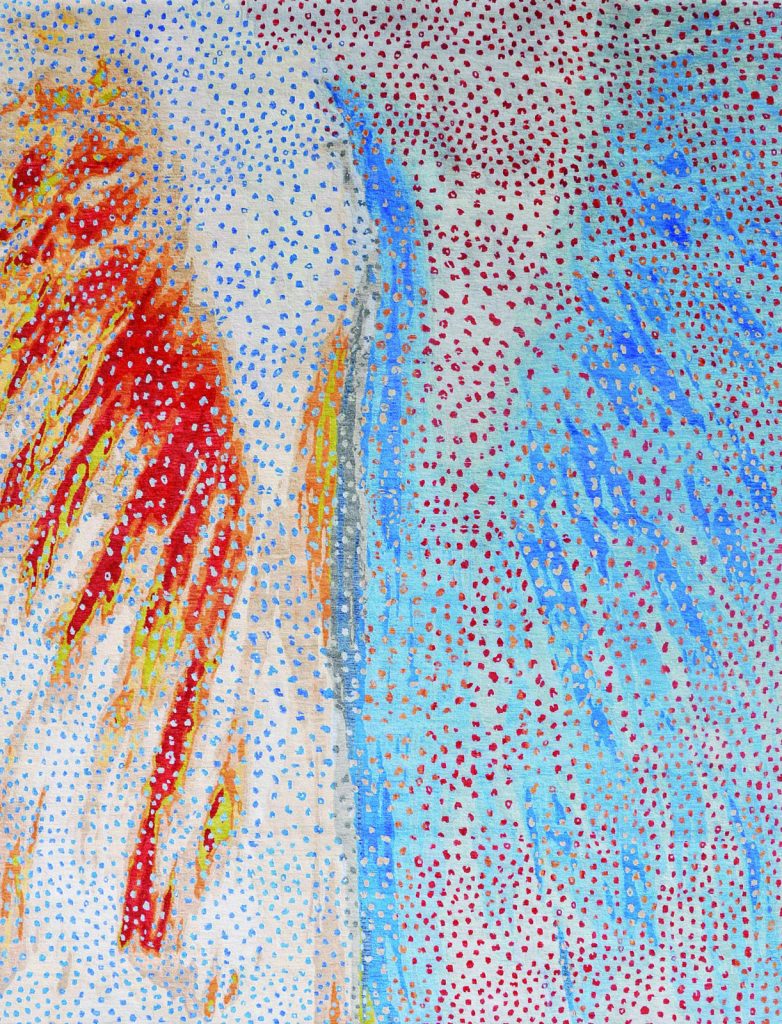
Tibetan wool, which he considers the finest in the world, is hand-spun with silk, in an exact proportion that remains a carefully guarded secret. Ninety per cent of Wool & Silk Rugs’s carpets are handcrafted in Nepal.
But design is his real passion, says Tezcan, who has been known to stay up nights for days on end to complete a rug. He derives inspiration from many sources. The rug called Rampart, for instance, was inspired by a snapshot taken by his brother of an an old Byzantine wall in Istanbul.
Another rug, called Divine, is based on a photograph of a stream, lake and vegetation on the earth. “The gold and red colours in this rug represent the colours of autumn,” he says.
These days, it’s mostly photographs that trigger the creative process. Tezcan alters whatever image he’s working with by using Photoshop until he gets the effect he’s after. The whole process can take as few as three days and up to a month or more.
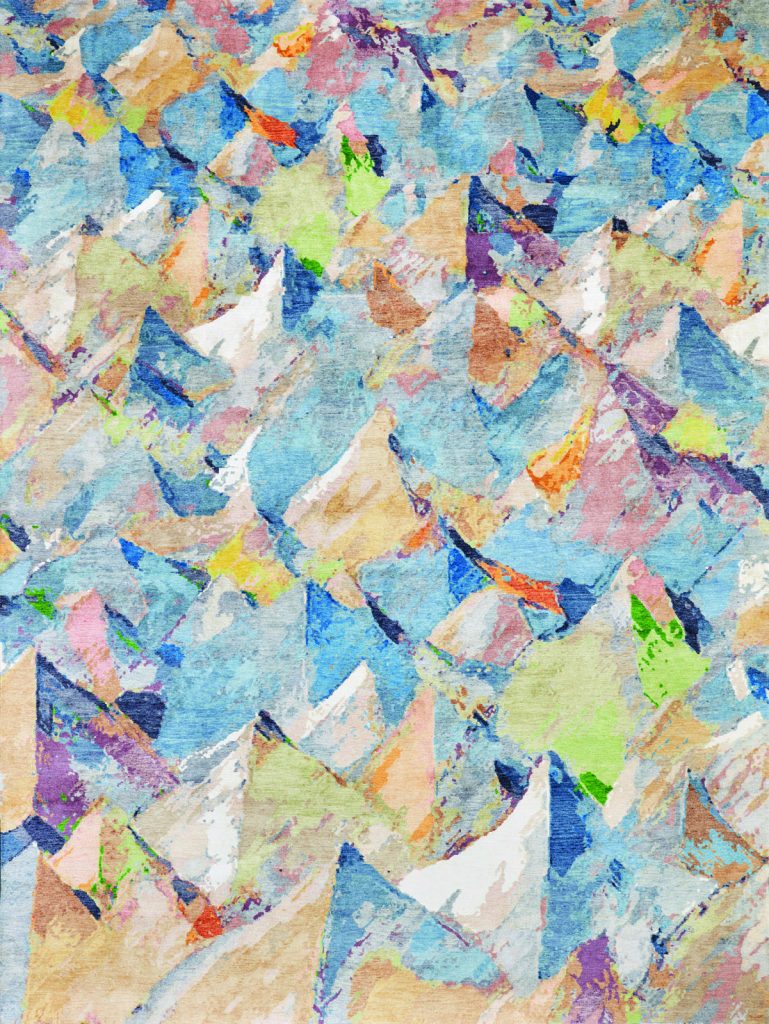
The designer occasionally works with other artists. In 2017, an acrylic-on-canvas work by Texas abstract painter Bryan Debreuiel called The Beautiful People inspired a rug of the same name. Tezcan liked the work’s playful and colourful appeal, softening some of the lines in his interpretation.
In Toronto, Tezcan’s rugs are exclusively available at Weavers Art. Last summer, Weavers Art hosted an all-day exhibit of his 2018 collection. Visitors met the designer and were able to speak with him to gain insight into the unique designs.
One recent and important collaboration that Tezcan undertook was close to home. Several rugs in the most recent collection were designed by his son, Anka, 24. One, called Circle of Life, Tezcan père calls “cosmic,” and Cyclone was inspired by a patch of concrete floor. “I looked at the same floor every day and saw nothing,” says this proud father. “I taught him my method, but he sees things in his own way.”
Perhaps it’s ingrained in his genetic code.

